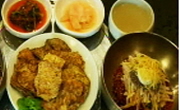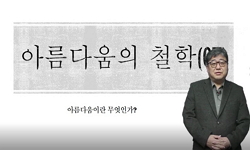본 논문은 조선 후기 풍류적 여가문화의 특징을 신윤복 작품을 중심으로 분석하고 작품 속에 내재되어 있는 반어적 풍자성에 대해 연구하였다. 연구 목적은 신윤복 작품에 내재되어 있는 창...
http://chineseinput.net/에서 pinyin(병음)방식으로 중국어를 변환할 수 있습니다.
변환된 중국어를 복사하여 사용하시면 됩니다.
- 中文 을 입력하시려면 zhongwen을 입력하시고 space를누르시면됩니다.
- 北京 을 입력하시려면 beijing을 입력하시고 space를 누르시면 됩니다.
https://www.riss.kr/link?id=T13552158
- 저자
-
발행사항
서울 : 경희대학교 교육대학원, 2014
-
학위논문사항
학위논문(석사)-- 경희대학교 교육대학원 : 미술교육전공 2014. 8
-
발행연도
2014
-
작성언어
한국어
- 주제어
-
DDC
742 판사항(22)
-
발행국(도시)
서울
-
기타서명
A Study on the Characteristics of the Pungryu Leisure Culture Inherent in the Genre Paintings of Shin Yun-Bok : Particularly about the Works in 《Hyewonjunsinchub》
-
형태사항
ⅹ, 109 p. : 삽화 ; 26 cm
-
일반주기명
지도교수: 정수모
경희대학교 논문은 저작권에 의해 보호받습니다.
참고문헌: p. 103-106 - 소장기관
-
0
상세조회 -
0
다운로드
부가정보
국문 초록 (Abstract)
본 논문은 조선 후기 풍류적 여가문화의 특징을 신윤복 작품을 중심으로 분석하고 작품 속에 내재되어 있는 반어적 풍자성에 대해 연구하였다. 연구 목적은 신윤복 작품에 내재되어 있는 창작 의도를 밝히고, 사회문화적 가치와 미술사적 가치를 알아보는 것이다. 또한, 조선 후기 양반 계층의 유흥적 여가·놀이 문화를 통해 중인 계층 화가의 시각으로 바라본 사회 기득권층의 귀족적인 삶을 객관적 관점으로 반추해 보는 데 의의가 있다. 궁극적으로 신윤복 작품에 보이는 세태 풍자적인 특징과 한국적 여가문화 형성에 대한 올바른 이해를 돕고자 한다.
이를 위해, 2장에서는 조선 후기 신윤복 풍속화에서의 풍류 문화 이해 및 풍류 문화의 사회·문화적 배경을 들어 주제 용어와 형성 배경을 살펴보았다. 풍류는 자연과 시문, 예술과 놀이가 결합된 형태로서 우리나라 문학과 예술에 형성되어 있는 개념이다. 신윤복 작품에서 보이는 풍류는 여러 사람이 더불어 즐기는 풍류이며 조선 후기에는 향락적인 성격으로 변질되었다. 풍류 문화의 사회·문화적 배경으로는 실학사상, 도시의 상업화와 신분제도의 붕괴, 상업적 미술문화의 활성화를 제시하였다. 실학사상을 통해 회화는 객관적 사고로 현실을 그릴 수 있었고, 도시의 상업화를 통해 서민들의 신분 상승과 계층 간의 문화교류가 활발해졌다. 이를 통해 발달된 상업적 미술문화는 한국의 독자적 화풍을 형성하는 데 기여하였다.
3장에서는 신윤복 풍속화에 내재된 풍류적 여가문화의 특징을 《혜원전신첩》의 작품을 중심으로 분석하였다. 작품은 주제별로 연인 관계, 기방·기생 풍속, 풍류적 여가·놀이 문화, 성적 암시, 일상생활, 절, 승려 소재 작품으로 분류했고, 본 논문에서는 양반들의 여가문화를 알 수 있는 풍류적 여가·놀이 문화 작품을 중심으로 특징을 분석했다.
그림 속 여가문화는 유흥과 놀이문화가 포함되며, 신분 계층의 세태 풍자적인 요소가 내재되어 있다. 내용은 사대부들의 정원과 유흥문화, 산수 유람 문화, 놀이문화로 분류하여 사회문화적 자료를 바탕으로 다양한 관점에서 분석하였다.
사회문화적 자료는 작품에 내재된 의미와 주제의식, 신윤복만의 독특한 조형적 표현을 부각시켜줌으로써, 한국적 사실주의의 특징을 잘 보여준다.
4장에서는 신윤복 풍속화의 풍류적 여가문화에 내재된 특징과 미술사적 의의를 알아보았다. 작품 분석을 통해 풍류적 여가문화 작품에 내재된 특징은 사회 기득권층의 향락적인 풍류 문화와 낭만적 풍류를 통한 우회적 풍자임을 알 수 있었다. 미술사적 의의로는 사회문화적 사료로서의 가치와 풍속화의 주제의식 변화, 한국 회화의 근대적 사실주의 기반 형성으로 도출하였다. 신윤복 풍속화에 내재된 풍류적 여가문화의 미술사적 의의는 다음과 같다.
첫째, 신윤복은 기생과 함께 등장하는 양반들의 풍류적 여가문화를 정면으로 다루어 여가문화에 대한 사회문화적인 기록을 남겼다. 그림을 통해 향락적이고 사치스러운 유흥 특성을 가감 없이 보여줌으로써 상층 양반 계층의 여가문화에 대한 연구를 가능하게 했다. 둘째, 그림에서 투호와 쌍륙을 즐기는 모습은 전통 놀이문화를 기록하고 알리는 역할을 한다. 이를 통해 우리 고유의 풍습과 놀이를 학습하고 놀이 방법을 익힐 수 있었다. 셋째, 당시에는 금기시 되었던 양반과 기생의 애정 관계를 주제로 표현함으로써 양반들의 향락적인 성문화를 비판하였다. 넷째, 신윤복은 봉건적 유교사회였던 조선시대에 천민 계층 여성인 기생을 주인공으로 하여 신분 계층에 대한 비판 의식을 부각시켰고 사회의식의 변화를 이끌었다. 다섯째, 한국적인 외형과 다양한 계층별 모습은 사실적인 묘사와 세련된 선묘, 한국 고유의 배색을 통해 대상의 실재감을 더했고 한국 회화의 근대적 사실주의를 형성하는 데 공헌하였다.
신윤복 풍속화에 내재된 풍류적 여가문화의 특징 연구를 통해 양반 계층의 문화를 확인하면서 시대에 굴복하지 않았던 화가의 작가정신을 엿볼 수 있었다. 신윤복은 이러한 사회 현실을 낭만적인 풍류로 그려냈지만, 그 이면에는 풍자적 성격의 해학성이 내재되어 있다. 이처럼 신윤복은 조선 회화의 특징인 자연친화적 풍류성을 들어내면서 우회적으로 자신의 주제의식을 보여줬다.
이 시기에 형성된 향락적 유흥 문화는 오늘날까지 이어져 본래 우리 조상들이 즐겼던 풍류의 좋은 의미는 퇴색되어 버렸다. 그러나 신윤복의 화의가 풍자에 있었듯이 풍류의 본질적 의미를 깨닫고 반성하는 계기가 되어야 할 것이다.
다국어 초록 (Multilingual Abstract)
This article analyze the characteristics of the pungryu leisure culture in late Josun Dynasty era around the works by Shin, Yun-Bok, and studie the ironical satires inherent in his works. The purpose of this study is to identify the creating intention...
This article analyze the characteristics of the pungryu leisure culture in
late Josun Dynasty era around the works by Shin, Yun-Bok, and studie the
ironical satires inherent in his works. The purpose of this study is to identify
the creating intentions inherent in his works and the social and art-historical
values. Also, it this study has the implication to reflect from an objective view
the noble lives of the privilege class, yangban, which were viewed from the
painter at a middle class, through the play and leisure culture of the yangban
class in late Josun. Ultimately, this article tries to help right understanding
about forming of Korean leisure culture and the characteristics of society
satire that can be seen in Shin’s pictures.
For that purposes, the chapter 2, thematic terms and forming background
are examine on the social and cultural background of pungryu culture and
understanding of pungryu culture in late Josun that can seen in Shin’s genre
paintings. Pungryu is a form that is connecte with nature, poets and prosaic,
and art and play, and a concept forme in the culture and art of our country.
Pungryu that was presente in Shin’s works was originally the one enjoye
along with many people. But, in late Josun it degenerate into a hedonic one.
In the social and cultural background of punryu culture the Shilhak thoughts,
commercialization of cities, breakdown of the status system, and the boom of
commercial art culture were include .
Through the Shilhak thought, paintings could catch the reality with objective
views, and through commercialization of cities, ascending of status was
activate . The develope commercial art culture owing to those contribute to
forming of the unique painting style of Korea.
In the chapter 3, the characteristics of pungryu leisure culture inherent in
Shin’s genre paintings are analyze base on the works in the collection
《Heywonjunsinchub》. The works in the collection are groupe in ‘romantic
relationship’, ‘gisaeng or gibang’, ‘pungryu leisure and play culture’, ‘sexual
suggestions’, ‘daily lives’, ‘temples’, and ‘Buddhism monks’, and in this article
the characteristics around pungryu leisure and play culture works that show
us the leisure culture of the yangban class are analyze .
The leisure culture in the pictures contains entertainment and play culture,
and society parodies around status and classes are inherent to the pictures.
The contents of the pictures are groupe into ‘garden of Sadaebu’,
‘entertainment culture’, ‘sightseeing mountains and rivers’, and ‘play culture’,
and analyze from various point of views base on the material about the
society and culture.
The social and cultural materials illuminate us the properties of the Korean
realism by highlighting the meaning and thematic consciousness, and the
original plastic expression of Shin.
In the chapter 4, the inherent characteristics and art-historical implications
in the pungryu leisure culture in the genre paintings of Shin are examine .
From analyses of the works, it was found that the inherent characteristics in
the works dealing with pungryu leisure culture were the indirect satires using
hedonic pungrye culture of the privilege class and romantic pungryu. The
art-historical implications were drawn including the value as social cultural
material, variation of thematic perception of the genre paintings, and the form
of the base for modern realism in Korean painting art. The art historical
implications inherent in the genre paintings of Shin are as below.
First, Shin left the social and cultural records about leisure culture by
directly dealing with the pungryu leisure culture of the yangban class that are
represente together with gisang. By showing the hedonic and luxurious
features of the entertainments without any adjustment, it allowed to study the
leisure culture of the upper yangban class. Second, the scenes enjoying tuho
and ssangruyk serve showing and recording the traditional play culture. From
the scenes we could lear our traditional customs and plays, and how to do
them. Third, Shin criticize the hedonic sexual culture of the yangban class by
expressing the subjects of romantic relationship between yangban and gisaeng,
which was a taboo at that time. Fourth, Shin highlighte criticism about the
status system and led the change of social consciousness by making gisaeng
who belonge the lowest class in the Josun era which was the feudal
Confucianism society. Fifth, the Korean appearances and various features
according to the classes adde the reality of the objects through realistic
description, refine line drawing, and Korean unique coloring, and contribute
to forming the modern realism of Korean picture.
By studying characteristics of leisure culture inherent in the genre painting
of Shin, the culture of the yangban class could be identifie and the artist’s
spirit not to surrender to the generation could be sense . Though Shin
painte the social reality with romantic taste, on the backside there were
inherent satirical humors. As discusse above, Shin, Yun-bok illuminate the
nature-friendly pungryu as a characteristic of Josun painting art and revealed
his thematic consciousness by de-tour.
The hedonic entertaining culture forme at that time has hande down until
today and the good points of pungryu which were originally enjoye by our
ancestors have been deteriorate . Just as the meanings of Shin’s pictures were
place in satire, it should be a motivation to think and reflect the essential
meanings of pungry
목차 (Table of Contents)
- 1. 서론 1
- 1) 연구 목적 및 의의 1
- 2) 연구 범위 및 방법 2
- 2. 조선 후기 신윤복 풍속화에서의 풍류 문화 이해 및 풍류 문화의 사회문화적 배경 5
- 1) 조선 후기 신윤복 풍속화에서의 풍류 문화 이해 5
- 1. 서론 1
- 1) 연구 목적 및 의의 1
- 2) 연구 범위 및 방법 2
- 2. 조선 후기 신윤복 풍속화에서의 풍류 문화 이해 및 풍류 문화의 사회문화적 배경 5
- 1) 조선 후기 신윤복 풍속화에서의 풍류 문화 이해 5
- (1) 풍류의 정의 5
- (2) 양반 계층의 풍류와 의미 6
- 2) 조선 후기 풍류 문화의 사회문화적 배경 10
- (1) 실학사상의 대두 10
- (2) 도시의 상업화와 신분제도의 붕괴 14
- (3) 상업적 미술문화의 활성화와 여가문화 18
- 3. 신윤복 풍속화에 내재된 풍류적 여가문화의 특징 분석 26
- 1) 신윤복 풍속화의 주제별 작품분류 26
- (1) 연인 관계 작품 29
- (2) 기방기생 풍속 작품 30
- (3) 풍류적 여가놀이 문화 작품 32
- (4) 성적 암시 작품 34
- (5) 일상생활 작품 36
- (6) 절, 승려 소재 작품 37
- 2) 풍류적 여가문화 작품에 내재된 세태 풍자적 특징 분석 39
- (1) 사대부들의 정원과 유흥문화 42
- (2) 산수 유람 문화 61
- (3) 놀이문화 75
- 4. 신윤복 풍속화의 풍류적 여가문화에 내재된 특징과 미술사적 의의 83
- 1) 풍류적 여가문화 작품에 내재된 특징 83
- 2) 풍류적 여가문화 작품에 내재된 미술사적 의의 84
- (1) 사회문화적 사료로서의 가치 84
- (2) 풍속화의 주제의식 변화 90
- (3) 한국 회화의 근대적 사실주의 기반 형성 96
- 5. 결론 99
- 참고문헌 103
- ABSTRACT 107











